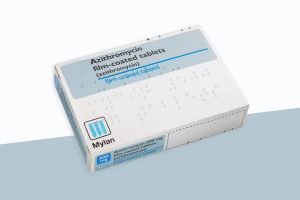Metronidazole is a potent antibiotic that treats bacterial infections in the vagina. Different types of antibiotics treat specific types of bacteria. Typically, antibiotics distort the genetic structure of infectious bacteria in the body, thus restricting their growth and reproduction, leading to eventual death. This article discusses Metronidazole vaginal gel, its uses, how to apply it, frequently asked questions and everything you need to know about this medication. Read on to learn about metronidazole vaginal gel and why your doctor may recommend it if you have a bacterial infection in your vagina.
Need a prescription for Metronidazole?
Get access to a licensed medical professional.
What is metronidazole?
Metronidazole is a potent antibiotic in the nitroimidazole antimicrobial class. It is highly effective against many bacteria and works by inhibiting their growth. Metronidazole is typically recommended to treat infections like bacteria vaginosis.
Despite its strength against bacteria, metronidazole does not treat yeast infections or infections caused by viruses or other parasites. Metronidazole does not treat sicknesses such as flu or the common cold as viruses.
Metronidazole can be used with other antibiotics to treat specific conditions, such as intestinal ulcers caused by the H. pylori bacteria. Clinical studies show that Flagyl is effective against trichomoniasis. The clinical trials, which examined over 97 patients with trichomoniasis, found that metronidazole completely eliminated the infectious bacteria.
Metronidazole is available in different forms. It can be taken orally as a tablet, capsule, suspension, gel, or liquid. Metronidazole vaginal gel is a potent antibiotic, so you should speak to your doctor about how well it suits you before using it to avoid unwanted health complications.
What is metronidazole vaginal gel used for?
Metronidazole is available in different forms. This antibiotic medication is available as a gel to be used topically on the site of the infection in the vagina.
Metronidazole vaginal gel is a form of metronidazole that treats explicitly bacterial infections in the vagina. Metronidazole gel works as a single dose before bedtime or once daily for 5 days before bedtime. I
n addition, your doctor may recommend using metronidazole vagina gel dosage twice daily for 5 days, depending on the severity of your infection.
Speaking to your doctor for direction before using metronidazole vaginal gel for bacterial infections is essential.
Take precautions not to get this gel into your eyes, skin, or mouth. However, if it does get in your eyes, wash them with water and inform your doctor immediately.
Avoid vaginal intercourse or using other vaginal health products like douches or tampons when using metronidazole vaginal gel.
How to use metronidazole antibiotic gel
Metronidazole vaginal gel is a potent antimicrobial that eliminates bacteria by stopping their growth and reproduction. To avoid unwanted health complications and side effects, you should speak to your doctor before using this medication.
Before taking metronidazole vaginal gel, check the patient information leaflet in the packaging and let your doctor know if you have any questions.
Metronidazole vaginal gel usually comes with an applicator to help you administer the medication. Follow the below instructions to use this gel medication.
Fill the applicator that comes with metronidazole vaginal gel packaging with the gel to the level recommended.
Lie on your back with your knees spread apart and pulled upwards.
Gently put the applicator in your vagina and release the plunger to put the medication in your vagina.
Remove the applicator immediately and dispose of it appropriately. If you’re instructed to reuse it, wash it with soap and warm water.
You must wash your hands after applying this gel to avoid spreading the infection.
You should only use this medication as recommended by your doctor to avoid unwanted complications. For the best effect you can use metronidazole at the same time daily for the prescribed duration.
Do not stop using metronidazole until the total prescribed amount is finished, even if your symptoms ease. Stopping the medication without completing your course may cause the infection to return.
Inform your doctor if your symptoms don’t ease after using metronidazole.
Precautions to note before using metronidazole
Metronidazole is a potent antibiotic that treats infections caused by infectious bacteria. Precautions must be taken before using this medication to avoid unwanted health complications or severe side effects.
Before using metronidazole, you must inform your doctor about all your medications, including prescription and nonprescription supplements, vitamins, and herbal products.
Let your doctor know if you’re using anticoagulants like warfarin and lithium.
You should also inform your doctor if you’re pregnant, breastfeeding, or planning to get pregnant. Oral metronidazole passes into human milk in small amounts, which may not be significant enough to cause breastfeeding infants harm.
Inform your doctor if you have ever had a blood disease or central nervous system condition, such as peripheral neuropathy, before using metronidazole.
If you’re allergic to secnidazole, tinidazole, metronidazole or any of the ingredients of metronidazole, you should let your doctor know before using this medication.
Furthermore, you should let your doctor know if you’re taking disulfiram or have taken the medication within the past 2 weeks.

Metronidazole side effects
Like all medications, metronidazole can cause adverse effects. Some are common and mild, and in some cases, severe side effects may occur. When taking this medication, informing your doctor of any health developments is vital.
Common and mild side effects of metronidazole include the following;
- headache
- nausea
- metallic taste in your mouth
- diarrhea
- vomiting
- abdominal discomfort
Rare and severe side effects include the following;
- Seizures
- skin rash
- itching
- hives
- blistering or peeling skin
- numbness or tingling sensation in your hands and feet
- unusual vaginal discharge
- vaginal itching
- convulsive seizures
- Psychotic reactions like psychosis or mania
Metronidazole drug interactions
Metronidazole is a typically mild antibiotic with common side effects. However, combining metronidazole with certain medications might trigger unwanted complications, including severe and fatal reactions.
These are some interactions to look out for if you’re using metronidazole.
Alcohol Interaction
Avoid alcoholic beverages while taking metronidazole. Using the two can lead to unwanted side effects such as nausea, vomiting, headache, and rapid heartbeat.
Metronidazole can also interact with propylene glycol in some medications and cosmetics. Be cautious if you’re using products containing propylene glycol.
Medication Interactions
Disulfiram
Taking metronidazole with disulfiram (used to treat alcohol dependence) can cause severe reactions. Avoid this combination.
Warfarin
Metronidazole may increase the effects of warfarin (a blood thinner). Regular monitoring is essential if you’re on both medications.
Lithium
Metronidazole can raise lithium levels in the blood. Close monitoring is crucial if you’re taking both drugs.
Other Medications
Several other medications may interact with metronidazole. Some examples include Adderall, Cipro, Lexapro, Tylenol, and Xanax.
Disease Interactions
Metronidazole may interact with certain health conditions:
Colitis: Use caution in patients with colitis (colon inflammation).
Blood Dyscrasias: Be cautious if you have blood disorders.
Neurologic Toxicity: Rarely, metronidazole can cause neurologic side effects.
Dialysis: Adjust the dose if you’re on dialysis.
Liver Disease: Liver function should be monitored during treatment.
Sodium: Metronidazole contains sodium; consider this if you’re on a low-sodium diet.
Alcoholism: Avoid metronidazole if you have a history of alcoholism
Pros and cons of metronidazole vagina gel
Like every medication, Metronidazole gel has advantages and disadvantages. Below are the pros and cons of metronidazole antibiotic gel.
Metronidazole gel pros
This antibiotic gel has fewer side effects than the oral form. Side effects of oral metronidazole include diarrhea, nausea, headaches, hives, and skin rash.
Some metronidazole brand names can treat bacterial vaginosis in one single dose.
Metronidazole antibiotic gel is considered a first-line treatment for bacterial vaginosis.
This medication is available in a generic form, which is cheaper to purchase.
Metronidazole vaginal gel cons
If you’re using metronidazole antibiotic gel, you must stay away from alcohol to avoid unwanted interactions and side effects.
Metronidazole is not recommended for use during breastfeeding.
You need to stay away from vaginal products when using this antibiotic gel.
People who use this gel should avoid vagina sexual intercourse.
When to see a doctor
Metronidazole is a typically mild antibiotic. It can cause mild adverse reactions like headaches, diarrhea, hives, skin rashes, abdominal pain, and nausea. These side effects usually ease quickly and may not require further action.
However, if the side effects persist, you must immediately inform your doctor or healthcare provider.
If you experience severe side effects of metronidazole, you must immediately inform your doctor. Severe side effects of the medication include hot flashes, breathing difficulty, abnormal heartbeat, and severe headaches.
You must inform your doctor before using metronidazole antibacterial gel.
In addition, to avoid unpleasant interactions, you should inform your doctor of all the drugs, supplements, and herbal products you’re taking before using metronidazole.
Frequently Asked Questions
Metronidazole is an antibiotic medication used to treat bacterial infections. This drug comes in different dosage forms, including gel to be inserted into the vagina.
Metronidazole antibiotic gel is used to treat bacterial infections in the vagina. Metronidazole is a first-line treatment for bacterial vaginosis because of its high effectiveness against bacteria.
Metronidazole is recommended for treating bacterial vaginosis and infections caused by trichomonas vaginalis during pregnancy.
BV and trichomoniasis can cause preterm birth. Speak to your doctor before using metronidazole during pregnancy to be sure the medication is suitable for your use.
Metronidazole antibiotic gel typically takes several days to eliminate BV. The specific duration is based on factors such as the severity of the infection, the patient’s immune system, and the reaction to the medication.
Here are standard guidelines for understanding how long metronidazole takes to treat BV.
You may notice a significant improvement in your symptoms after using metronidazole gel for a few days.
However, you must complete the entire course of antibiotics as recommended, even if your symptoms ease or subside.
An entire antibiotic course usually entails using the gel for 5 to 7 days.
After completing the recommended course of antibiotic gel, you should speak to your doctor. If your symptoms remain unabated, they may recommend alternative treatments to alleviate your condition.
Metronidazole is used to treat vaginal infections like BV and trichomoniasis. Bacterial infections in the vagina can cause a change in discharge colour.
Unusual change in vagina discharge is a symptom of infectious bacteria in the vagina.





